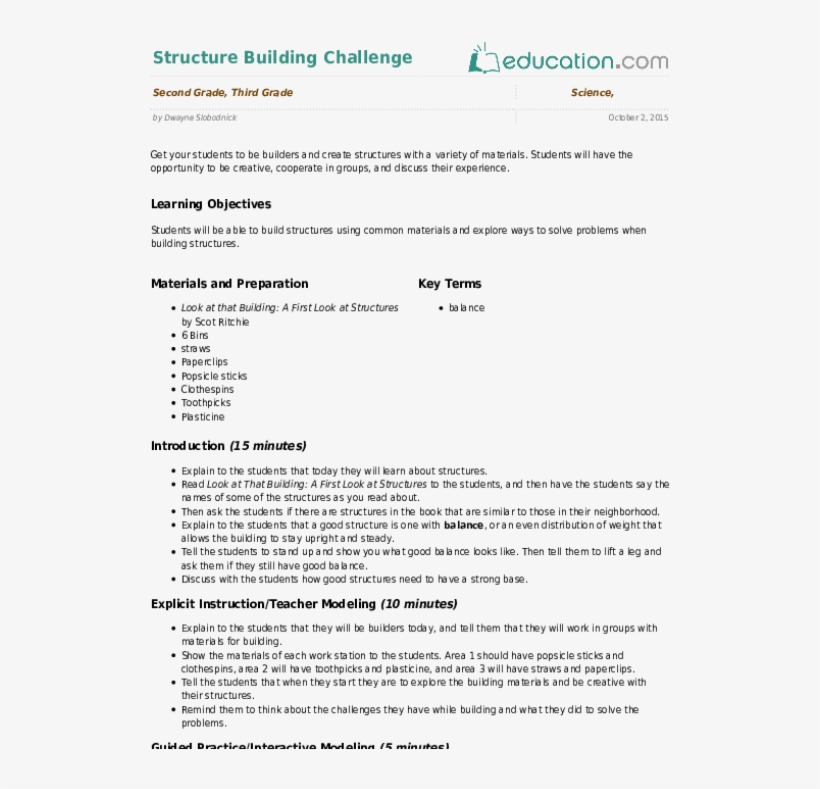
Place the students into small groups. They are not alive.

Living or Non-LivingLESSON 2.
Living and nonliving lesson plans. Non-Living 5E Lesson Plan for Grades K-2 PDF Subject. This 5E Lesson plan for grades K-2 helps students learn about living and non-living things. Includes an activity video reading material and quiz.
Ask students to think of a question or something they want to know about living and nonliving things. Remind students that questions start with who what when where why or how. Allow students think time and choose student volunteers to ask questions.
Write questions on the board eg How do you know if something is living. Or What can living things do. Free Living and Nonliving Things Activity Center for Small Groups.
Cut the picture cards apart. Students sort the picture cards onto the LivingNonliving sorting mat. Students can do this activity independently or in a small group.
Use the picture cards to play Tic-Tac-T. Place the students into small groups. Provide each group with the Living and Non-Living Sorting Activity.
Explain to the students that they must work together as a group to sort and classify the cards according to whether they are living or non-living. Monitor and support the students as required. Allow each group to report back to the class.
Encourage the students to explain the reasons behind. Lesson Proper - Class living things are those things that can grow produce breath change on their own and respond to the environment in short it is alive. They need food water and air that to stay alive.
Non-Living things- these are the thing that opposite to the living things. It does not need an air to breath or food to eat. LIVING AND NON-LIVING LESSON PLAN Key Vocabulary living things non-living things natural things man-made things.
Lesson Materials Rectangular Cardboard Piece Blue Paint Finger PaintCraft Paint Living and Non-Living Worksheet Printable. Living or Non-LivingLESSON 2. Living and Non-Living SafariLESSON 3.
What Do We NeedLESSON 4. I Need That-Further Exploration of Our Basic NeedsLESSON 5. The Fabulous Five Food GroupsLESSON 6.
Its A Balancing Act-Exploring MyPlateLESSON 7. No Bones About It-What Do We Need for Strong Bones. If something is nonliving then it is dead.
Plants are not alive because they do not talk or move. Animals are alive because they eat food but plants do not eat food. Subscribe today to download a FREE printable STEM Lesson Plan for Living vs.
When doing this activity with my 3- and 5-year olds we began by looking for items to collect in our paper bags which we considered might be living or nonliving. Grade 3 Lesson Plan- Living and Nonliving things 1. LESSON PLAN IN SCIENCE July 26 2017 I.
OBJECTIVES At the end of the session the pupils will be able to. The class will be divided into 4 groups. Teacher will give a.
Living and nonliving things are characteristically different. Their requirements are not the same nor do they perform the same functions. Nonliving things may appear to grow or move but they do not truly perform the seven life processes.
They do not have life. They are not alive. Living and nonliving things belong in two distinct categories.
LAE402 830 1000AM EDUC TEC 2 LESSON PLAN TEACHING ABOUT IDENTIFYING LIVING AND NONLIVING THINGS Learning Objectives Students will be able to ask and answer questions about living and nonliving things to clarify their thinking and classifications. Materials and preparation 2 Hula hoops Book. Whats Alive by Kathleen Weidner Zoehfeld Video.
Have students list the three types of living things. Animals plants and people. Have them share what living things need to survive.
Chart their responses on interactive smartboard. Provide art paper for students to draw what theyve observed. Have them write a statement about what makes one or both living or nonliving.
Assist students with statements. Identifying Living and Nonliving things. The students will study both living and nonliving organisms.
Well watch a video called Living and Nonliving Stuff and read the book Whats Alive by Kathleen Weidner ZoehfeldThe book asks. This is a living and nonliving things lesson plan to compliment a unit on living and nonliving things in Kindergarten. Students will learn the difference between a living and nonliving animal.
A download of a living and nonliving worksheet and some great websites are available at. 1st Grade Science Living and NonLiving Lesson. I can identify the difference between living and nonliving things.
This is a continuation lesson from Kindergarten. In Kindergarten students learned to make observations to describe patterns of what plants and animals including humans need to survive. Create a large chart categorizing thins that are living and things that are non-living.
Older preschoolers can work on a Venn diagram two large overlapping circles. In one circle put natural things in the other circle put human-made things and in the overlap put things that have components of both human-made and natural. This will take a lot of thinking and discussion.
Some ideas for human. Living Nonliving Things Lesson Plan. Dana teaches social sciences at the college level and English and psychology at the high school level.
To introduce the topic to your students bring a picture of a potted flower an animal like a dog or a turtle and a rock. Show the pictures to the class and ask them to think about which ones are living and which are not living. Tape the three pictures across the top of a large piece of bulletin board paper.